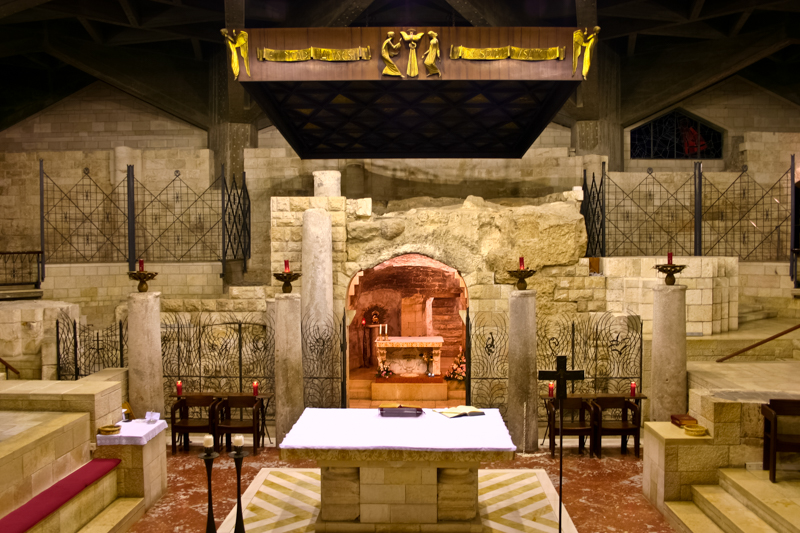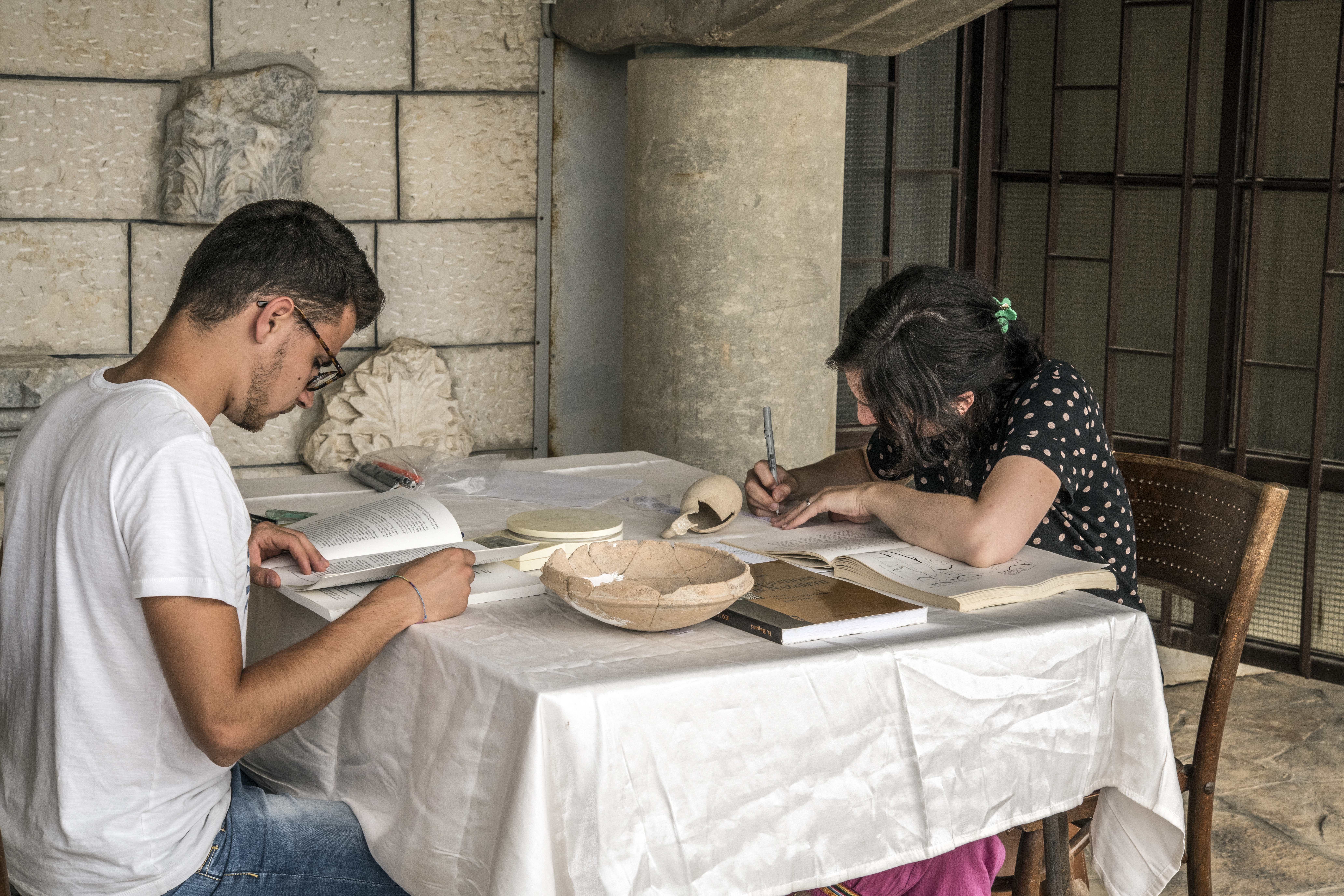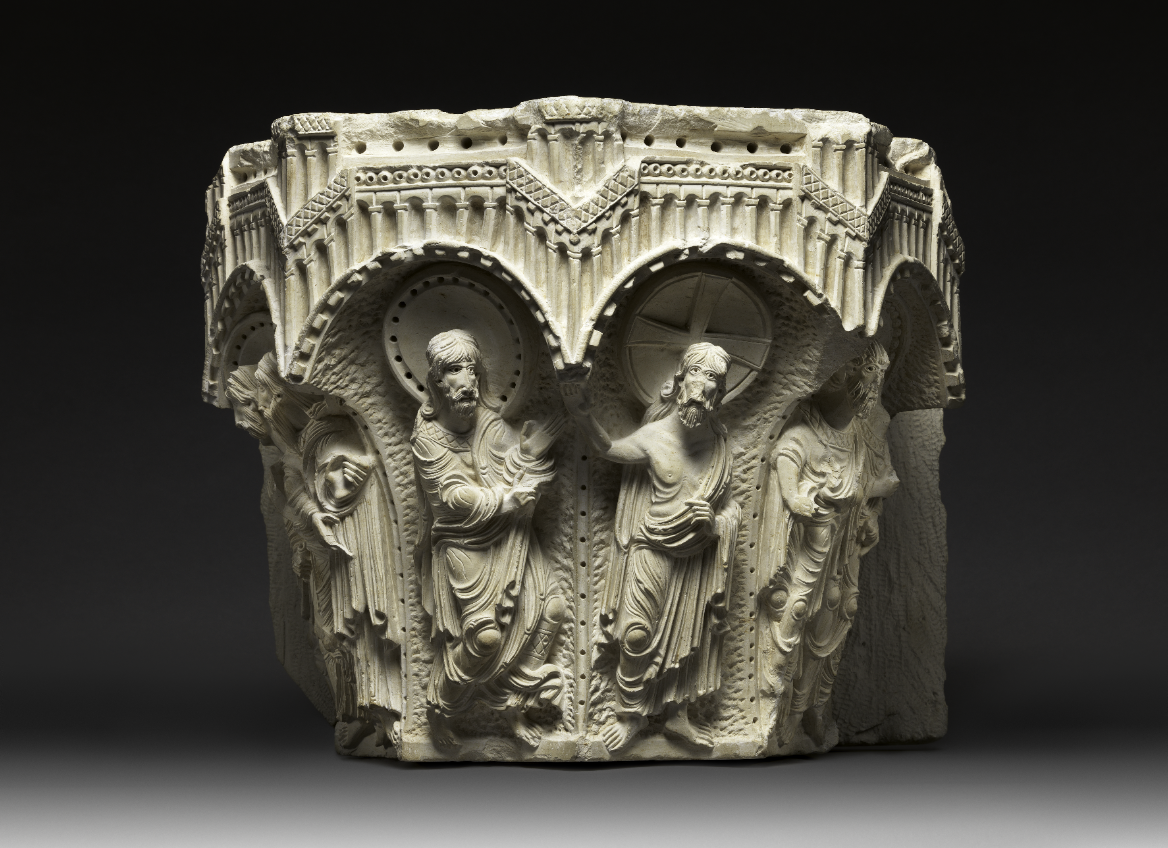Cataloging at the Terra Sancta Museum in Nazareth
The history of the excavations around the Grotto of the Annunciation at Nazareth begins in 1892 when Brother Benoît Vlaminck discovered the remains of a mosaic floor from the Byzantine period. The story continues with the intervention of Father Prosper Viaud who, on several occasions (1889 and 1907-1909), carried out archaeological research in the area.
It was at this very moment that the first museum of Nazareth was born, destined to expand to house the findings of the excavations conducted in 1955 under the direction of Father Bellamiro Bagatti OFM.
Today, the Terra Sancta Museum in Nazareth houses objects that document the entire period of occupation of the area surrounding the current sanctuary, from the Bronze Age to modern times, including the Roman and Crusader ages.
The main purpose of the cataloging campaign I participated in with the Terra Sancta Museum archaeologist was to take measurements and collect data on pieces exhibited in the museum in order to add them to the general database. At the same time, we took photographs of the findings which was necessary due to the absence of color photographs in most of the old bibliographies.
The project aimed not only to document the individual objects and their arrangement in the museum but also to study them in-depth. Experts in the field will be able to consult, on request, the files produced and access the most important data without having to leave their desks.
The Nazareth collection houses five works of great importance to the history of medieval art. These are the five historiated capitals made for the Basilica of the Annunciation after the 1170 earthquake and, according to some, prior to 1187, the year in which Saladin’s army conquered most of the Latin territories of the Holy Land. Each capital features episodes from the lives of the apostles Peter, James the Greater, Thomas, Matthew, and a representation whose meaning is still debated today. The capitals are valuable not just because of their excellent state of conservation, but also because they testify to the meeting of Western and Eastern traditions, reflected in both their style and iconography.
The beauty of these works, together with the charm of the finds and the inscriptions preserved in the museum, make the Terra Sancta Museum branch in Nazareth an invaluable treasure that I hope can be further appreciated thanks to our cataloging work.

[IT]La grotta dell’Annunciazione nella Basilica di Nazareth ©CTS[/IT][EN]The Grotto of the Annunciation in the Basilica of Nazareth ©CTS[/EN][ES]Cueva de la Anunciación en la Basílica de Nazaret ©CTS[/ES][FR]La Grotte de l’Annonciation dans la Basilique de Nazareth ©CTS[/FR]

[IT]Lo studio durante la catalogazione ©Neva Gasparo[/IT][EN]Study during cataloguing ©Neva Gasparo[/EN][ES]Estudio durante la catalogación ©Neva Gasparo[/ES][FR]Etude pendant le catalogage ©Neva Gasparo[/FR]

[IT]Incontro tra San Tommaso e Cristo risorto, capitello di San Tommaso ©MET, New York[/IT][EN]Meeting between St. Thomas and the Risen Christ, capital of St. Thomas ©MET, New York[/EN][ES]Encuentro entre Santo Tomás y Cristo Resucitado, capital de Santo Tomás ©MET, Nueva York[/ES][FR]Rencontre entre saint Thomas et le Christ ressuscité, capitale de saint Thomas ©MET, New York[/FR]



